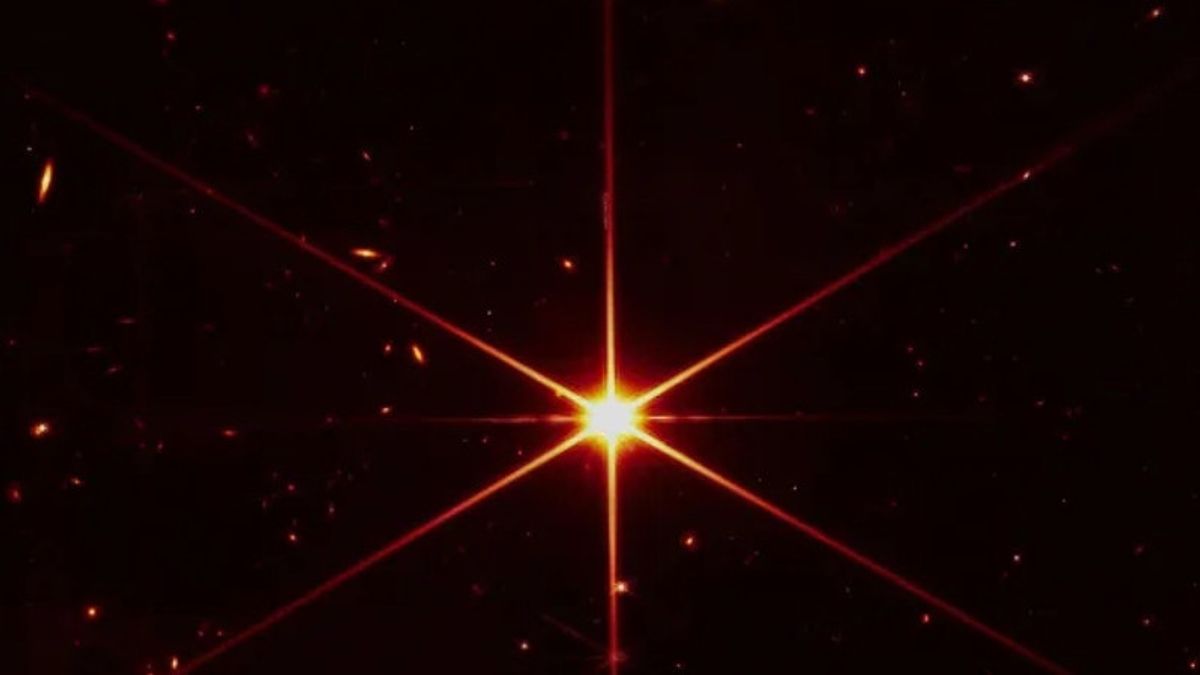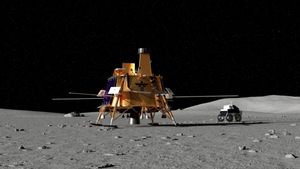JAKARTA - After completing the assembly of its main mirror with 18 segments, the James Webb Space Telescope immediately took extraordinary images of an uncharacteristic star as a test of its capabilities.
The pointed star, known as HD84406, is 100 times fainter than what the human eye can see. Although the picture is beautiful, the star itself is less attractive.
Instead, astronomers have been fascinated by the tiny bursts of dots scattered across the background. Each is a distant ancient galaxy.
The Webb Telescope image is not an official scientific observation, but rather to see how its 18 hexagonal mirrors work together for one coordinated image taken 1.6 million kilometers away from Earth.
Last month, NASA spotted a much closer star with 18 separate images of its mirrored segment. But now, scientists say they are dizzy when they see the new test photos arrive.
This is because the star, which is 100 times fainter than what the human eye can see, is 2,000 light years away. One light year is nearly 9.7 trillion kilometers.
The Webb Telescope's mirror shape and filters make the shimmering star look more red and pointed, but it's the background that really steals the show.
"You can't help but see thousands of galaxies behind it, it's beautiful," said Jane Rigby, Webb Telescope Operations Project Scientist.
The galaxies are several billion years old. Scientists hope the Webb Telescope will see so far and back in time that it will gain knowledge a few hundred million years after the Big Bang.
Unfortunately, the Webb Telescope's first scientific images won't come until late June or early July. Once the mirror alignment is completed perhaps in early May, NASA said the team's other major preparatory step would be to calibrate the instruments aboard the observatory. The work is expected to be completed this summer, when the Webb Telescope can begin its scientific observations.
The giant observatory's science agenda includes topics such as understanding the early days of the universe, assessing the habitability of exoplanets, and identifying the impact of mysterious dark matter on the cosmos.
The English, Chinese, Japanese, Arabic, and French versions are automatically generated by the AI. So there may still be inaccuracies in translating, please always see Indonesian as our main language. (system supported by DigitalSiber.id)













